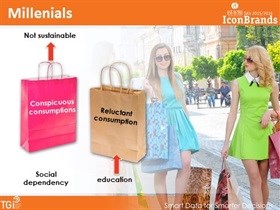






These two tendencies of conspicuous and reluctant consumption are even present within the same individual when it comes to different product category consumption choices. Certain product categories that are linked to status and mobility may encourage conspicuous consumption and this will in turn be balanced out by saving when it comes to other product categories.
"According to the Consumer Expenditure Survey Anthology, conspicuous consumption is very evident in South Africa. It increases in groups or segments where average incomes are lower and inequality is higher. Conspicuous consumption in the middle class is sometimes linked to insecure membership of the group and is often negatively related to asset ownership. As asset ownership rises it is likely that conspicuous consumption would decrease, perhaps because the need to signal economic status declines commensurately," says Sarina de Beer MD of Ask Afrika.
Conspicuous consumption is a term introduced by the Norwegian-American economist and sociologist Thorstein Veblen in his book 'The Theory of the Leisure Class' published in 1899. The term refers to consumers who buy expensive items to display wealth and income rather than to cover the real needs of the consumer. A flashy consumer uses such behaviour to maintain or gain higher social status. Most classes have a flashy consumer affect and influence over other classes, seeking to emulate the behaviour. The result, according to Veblen, is a society characterised by wasted time and money.
It says that conspicuous displays of consumption and leisure are a means to demonstrate one's superiority. It does not necessarily matter if you are rich or poor, everyone to some extent attempts to impress others and seek to gain advantage through 'conspicuous consumption' and the ability to engage in 'conspicuous leisure'.
One needs only to consider social media trends where people post pictures of their wonderful holidays or fun times out with friends and the hard reality of life is often concealed. Another example is significant spending on luxury brands to create the illusion of elevated social status by an individual who is sleeping on the floor in a commune with a number of others, yet is hiding this reality.
Conspicuous consumption is not sustainable and leads to social dependency; it seems that there is a link to education levels and reluctant consumption. The differentiation is often clearly marked amongst millennials where certain members of the lower middle class will plough all of their funds into education with the desire to raise their social standing whereas others will create the illusion of social mobility through brand association and consuming beyond their means.